 W
WThe culture of the Isle of Man is influenced by its Celtic and, to a lesser extent, its Norse origins, though its close proximity to the United Kingdom, popularity as a UK tourist destination, and recent mass immigration by British migrant workers has meant that British influence has been dominant since the Revestment period. Recent revival campaigns have attempted to preserve the surviving vestiges of Manx culture after a long period of Anglicisation, and significant interest in the Manx language, history and musical tradition has been the result.
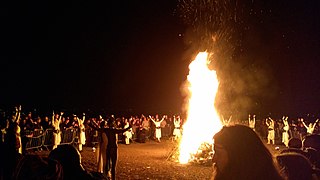 W
WBeltane or Beltain is the Gaelic May Day festival. Most commonly it is held on 1 May, or about halfway between the spring equinox and summer solstice. Historically, it was widely observed throughout Ireland, Scotland, and the Isle of Man. In Irish the name for the festival day is Lá Bealtaine, in Scottish Gaelic Là Bealltainn and in Manx Gaelic Laa Boaltinn/Boaldyn. It is one of the four Gaelic seasonal festivals—along with Samhain, Imbolc and Lughnasadh—and is similar to the Welsh Calan Mai.
 W
WThomas Edward Brown, commonly referred to as T. E. Brown, was a late-Victorian scholar, schoolmaster, poet, and theologian from the Isle of Man.
 W
WSir Thomas Henry Hall Caine, usually known as Hall Caine, was a British novelist, dramatist, short story writer, poet and critic of the late nineteenth and early twentieth century. Caine's popularity during his lifetime was unprecedented. He wrote fifteen novels on subjects of adultery, divorce, domestic violence, illegitimacy, infanticide, religious bigotry and women's rights, became an international literary celebrity, and sold a total of ten million books. Caine was the most highly paid novelist of his day. The Eternal City is the first novel to have sold over a million copies worldwide. In addition to his books, Caine is the author of more than a dozen plays and was one of the most commercially successful dramatists of his time; many were West End and Broadway productions. Caine adapted seven of his novels for the stage. He collaborated with leading actors and managers, including Wilson Barrett, Viola Allen, Herbert Beerbohm Tree, Louis Napoleon Parker, Mrs Patrick Campbell, George Alexander, and Arthur Collins. Most of Caine's novels were adapted into silent black and white films. A. E. Coleby's 1923 18,454 feet, nineteen-reel film The Prodigal Son became the longest commercially made British film. Alfred Hitchcock's 1929 film The Manxman, is Hitchcock's last silent film.
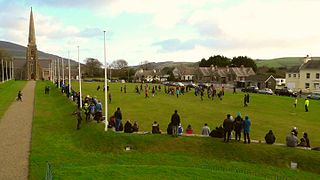 W
WCammag is a team sport originating on the Isle of Man. It is closely related to the Scottish game of shinty and is similar to the Irish game of hurling. Once the most widespread sport on Man, it ceased to be played around 1900 after the introduction of association football, though it has experienced a revival in the 21st century.
 W
WThe Cooish is the name of a festival that promotes Manx language and culture that takes place on the Isle of Man each November. The word 'Cooish' is a Manx word that has many meanings. It can translate to mean a chat, a meeting, a cause, an issue, or a get-together.
 W
WCregneash or Cregneish is a small village and tourist destination in the extreme south-west of the Isle of Man, about 1 mi (2 km) from Port Erin. Most of the village is now part of a living museum run by Manx National Heritage. There are also a number of private homes in the village, but their external appearance is controlled to maintain an older look. The village was also home to prominent Manx language speakers, Edward Faragher and Ned Maddrell.
 W
WArthur Binns Crookall JP, MLC, CP, was a noted philanthropist, Mayor of the Borough of Douglas, a member of both branches of Tynwald, Chairman of the Isle of Man Steam Packet Company and Chairman of the Isle of Man Railway Company who at his death was one of the wealthiest people on the Isle of Man.
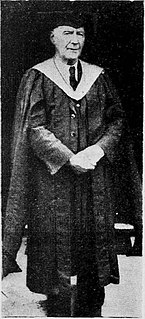 W
WWilliam Cubbon M.A. was a Manx nationalist, antiquarian, author, businessman and librarian who was the first secretary of the Manx Museum, later becoming Director of the Museum.
 W
WEdward Faragher (1831–1908), also known in Manx as Ned Beg Hom Ruy, was a Manx language poet, folklorist and cultural guardian. He is considered to be the last important native writer of Manx and perhaps the most important guardian of Manx culture during a time when it was most under threat. The folklorist, Charles Roeder, wrote that Faragher had "done great services to Manx folklore, and it is due to him that at this late period an immense amount of valuable Manx legends have been preserved, for which indeed the Isle of Man must ever be under gratitude to him."
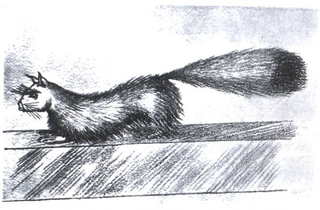 W
WGef, also referred to as the Talking Mongoose or the Dalby Spook, was the name given to an allegedly talking mongoose which was claimed to inhabit a farmhouse owned by the Irving family. The Irvings' farm was located at Cashen's Gap near the hamlet of Dalby on the Isle of Man. The story was given extensive coverage by the tabloid press in Britain in the early 1930s. The Irvings' claims gained the attention of parapsychologists and ghost hunters, such as Harry Price, Hereward Carrington, and Nandor Fodor. Some investigators of the era as well as contemporary critics have concluded that Voirrey Irving used ventriloquism and family collusion to perpetuate the hoax.
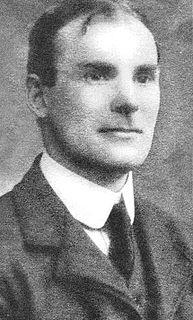 W
WWilliam Walter Gill (1876–1963) was a Manx scholar, folklorist and poet. He is best remembered for his three volumes of A Manx Scrapbook.
 W
WWilliam Gill was a Manx merchant navy officer who served as commanding officer of numerous Isle of Man Steam Packet Company vessels. Gill was the first recognised captain of the line, retiring with the rank of Commodore.
 W
WWilliam Henry Gill was a Manx musical scholar who wrote and composed anthem of Isle of Man, "Arrane Ashoonagh Dy Vannin".
 W
WBaron Leonida Nikolai Giovannelli was an Italian-born Manx writer and cultural activist, publishing actively between the 1950s and 1980s.
 W
WHop-tu-Naa is a Celtic festival celebrated in the Isle of Man on 31 October. It is the celebration of the traditional Celtic festival of Samhain, the start of winter. It is thought to be the oldest unbroken tradition in the Isle of Man.
 W
WHunt the Wren is a traditional custom carried out on the Isle of Man on the 26 December, St. Stephen's Day. It consists of groups of people going around villages and towns singing and dancing a traditional song and dance around a decorated wren pole.
 W
WPhilip Moore Callow Kermode, was a Manx antiquarian, historian and naturalist.
 W
WDavid "Dawsey" Kewley was a Manx boatman, member of the Douglas Rocket Brigade and volunteer in the Lifeboat Service, renowned for his involvement in the saving of lives at sea. Reports of the number of people he saved from drowning vary. According to some contemporary reports he saved as many as 38 lives, according to others 25, but it is generally recognised that he was directly involved in saving the lives of at least 23 people, and as a member of the Douglas Lifeboat Crew assisted in the saving of many more. He was a recipient of numerous awards from the Royal Humane Society for his life-saving exploits. Although a man of dauntless courage, he would never speak about his feats and disliked hearing other people talk about them.
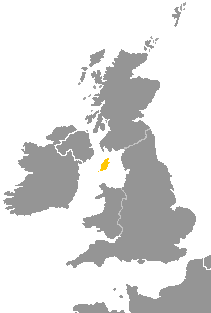 W
WManx, also known as Manx Gaelic, and also historically spelled Manks, is a Goidelic language of the insular Celtic branch of the Celtic language family, itself a branch of the Indo-European language family. The language of the Manx people was spoken as a first language on the Isle of Man until the death of the last native speaker, Ned Maddrell, in 1974. Despite this, the language has never fallen completely out of use, with a minority having some knowledge of it as a heritage language, and it is still an important part of the island's culture and cultural heritage. Manx has been the subject of language revival efforts; in 2015, around 1,800 people had varying levels of second language conversational ability. Since the late 20th century, Manx has become more visible on the island, with increased signage, radio broadcasts and a Manx-medium primary school. The revival of Manx has been made easier because the language was well recorded: for example, the Bible and Book of Common Prayer had been translated into Manx, and audio recordings had been made of native speakers.
 W
WLughnasadh or Lughnasa is a Gaelic festival marking the beginning of the harvest season. Historically, it was widely observed throughout Ireland, Scotland and the Isle of Man. In Modern Irish it is called Lúnasa, in Scottish Gaelic: Lùnastal, and in Manx: Luanistyn. Traditionally it is held on 1 August, or about halfway between the summer solstice and autumn equinox. But, in recent centuries some of the celebrations shifted to the Sundays nearest this date.
 W
WManx English, or Anglo-Manx, is the historic dialect of English spoken on the Isle of Man, though today in decline. It has many borrowings from Manx, a Goidelic language, and it differs widely from any other variety of English, including dialects from other areas in which Celtic languages are or were spoken, such as Welsh English and Hiberno-English.
 W
WManx National Heritage is the national heritage organisation for the Isle of Man. The organisation manages a significant proportion of the island’s physical heritage assets including over 3,000 acres of coastline and landscape. It holds property, archives, artwork, library and museum collections in trust for the Manx nation. It is the Isle of Man's statutory heritage agency and an Isle of Man registered charity (№ 603).
 W
WThe Manxman is a 1929 British silent romance film directed by Alfred Hitchcock and starring Anny Ondra, Carl Brisson and Malcolm Keen. The film is based on a popular 1894 romantic novel The Manxman by Hall Caine, which had previously been made into a film 13 years earlier. It was the last fully silent production that Hitchcock directed before he made the transition to sound film with his next film Blackmail (1929).
 W
WSophia Morrison was a Manx cultural activist, folklore collector and author. Through her own work and role in encouraging and enthusing others, she is considered to be one of the key figures of the Manx cultural revival. She is best remembered today for writing Manx Fairy Tales, published in 1911, although her greatest influence was as an activist for the revitalisation of Manx culture, particularly through her work with the Manx Language Society and its journal, Mannin, which she edited from 1913 until her death.
 W
WThe music of the Isle of Man reflects Celtic, Norse and other influences, including those from its neighbours, Scotland, Ireland, England and Wales. The Isle of Man is a small island nation in the Irish Sea, between Great Britain and Ireland.
 W
WJohn Allen Mylrea MHK, was a member of the House of Keys, Chairman of the Isle of Man Steam Packet Company and a director of Dumbell's Bank, who in the late 19th century played a prominent part in the arts and culture of the Isle of Man.
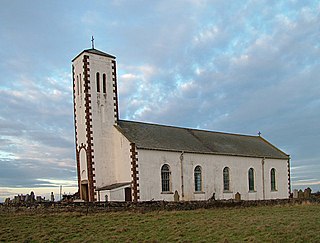 W
WEsther Nelson (1810–1843) was a Manx poet best remembered for her book, Island Minstrelsy.
 W
WHenry Bloom Noble JP was a Cumbrian-born philanthropist and businessman who at the time of his death was the richest resident of the Isle of Man. Noble bequeathed a large amount of his vast fortune to the people of the Isle of Man, resulting in numerous civic amenities such as recreation grounds, swimming baths, a library and a hospital.
 W
WA pub session is performing music in the setting of a local pub, in which the music-making is intermingled with the consumption of ale, stout, and beer and conversation. Performers sing and play traditional songs and tunes from the Irish, English, Scottish and Manx traditions, using instruments such as the fiddle, accordion, concertina, flute, tin whistle, uilleann pipes, tenor banjo, guitar, and bodhrán. Some sessions have dancing too
 W
WJohn Quine was a Manx clergyman, scholar, novelist and playwright. He is perhaps best remembered for his 1897 novel, The Captain of the Parish.
 W
WStephen Paul Quine MHK, is a Manx-born commercial pilot and politician who, on August 31, 2002, was pilot in command of the final Manx Airlines flight. On 27 August 2020 he was elected as a Member of the House of Keys for the constituency of Douglas South in a by-election.
 W
WThe Reih Bleeaney Vanannan is the Isle of Man's most prestigious annual award for culture. It is presented by Culture Vannin to the person or group who, in the opinion of the panel of assessors, has made the most outstanding contribution to Manx culture. It is officially presented by the President of Culture Vannin, normally in January each year.
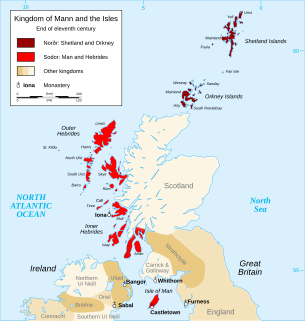 W
WThe Manx runestones were made by the Norse population on the Isle of Man during the Viking Age, mostly in the 10th century. Despite its small size, the Isle of Man stands out with many Viking Age runestones, in 1983 numbering as many as 26 surviving stones, which can be compared to 33 in all of Norway. So many of them may appear on the Isle of Man because of the merging of the immigrant Norse runestone tradition with the local Celtic tradition of raising high crosses.
 W
WChristopher R. Shimmin (1870–1933), Manx playwright and MHK.
 W
WThe Story of the Isle of Man is a 1901 book on the history of the Isle of Man by A.W. Moore. It was written as an introduction to Manx history, specifically for children.
 W
WJames Teare was a Manx merchant navy officer who served as a seaman and later as an officer on numerous Isle of Man Steam Packet Company vessels. Capt. Teare is best known as the Master of the RMS Ellan Vannin on her ill-fated voyage from Ramsey, Isle of Man to Liverpool on 3 December 1909.
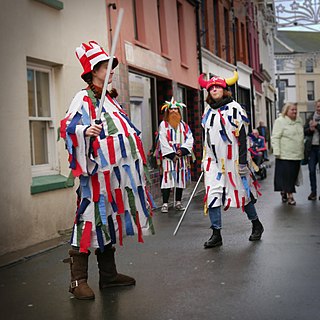 W
WThe White Boys is the traditional mummers' play of the Isle of Man.
 W
WTynwald Day is the National Day of the Isle of Man, usually observed on 5 July.